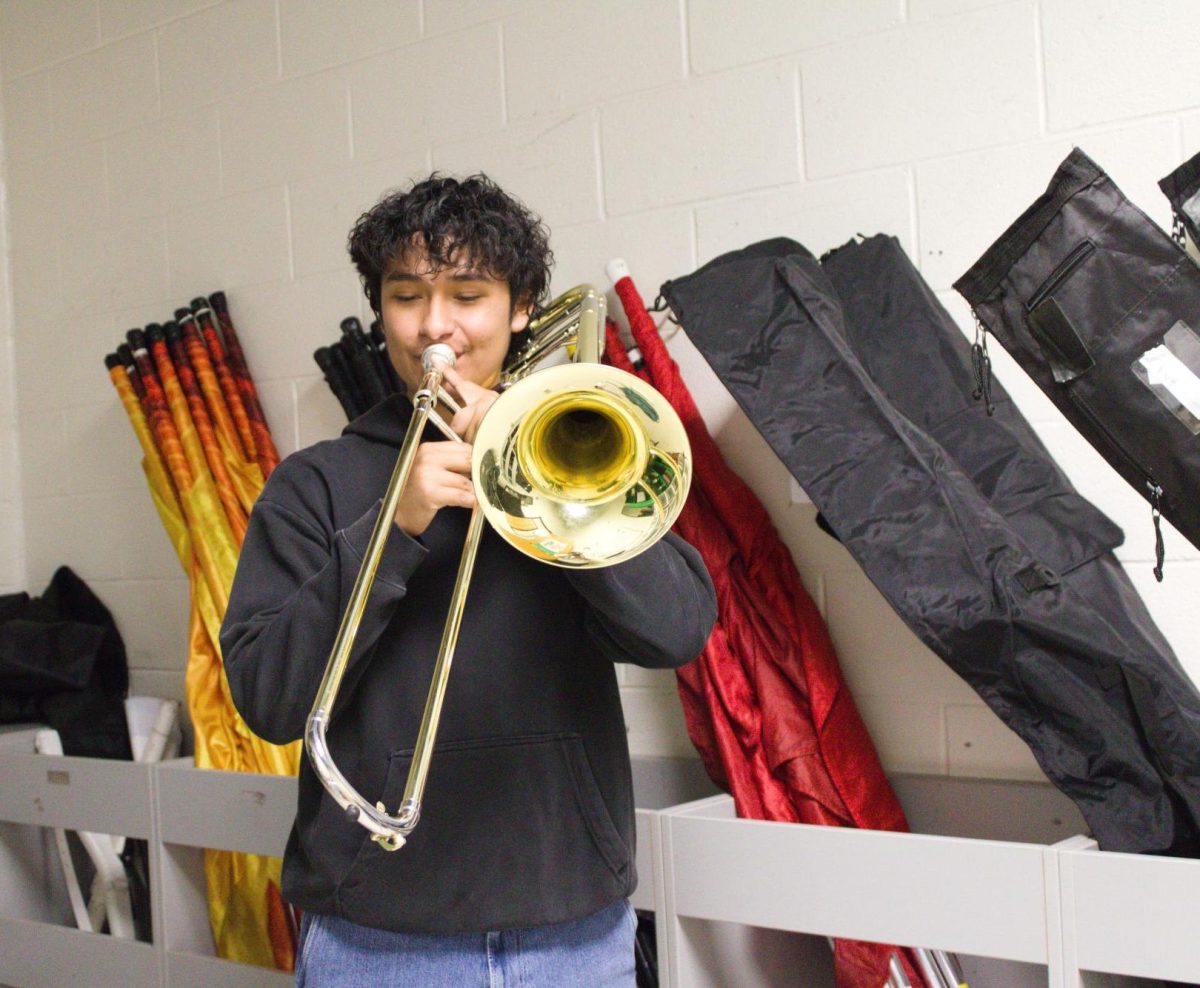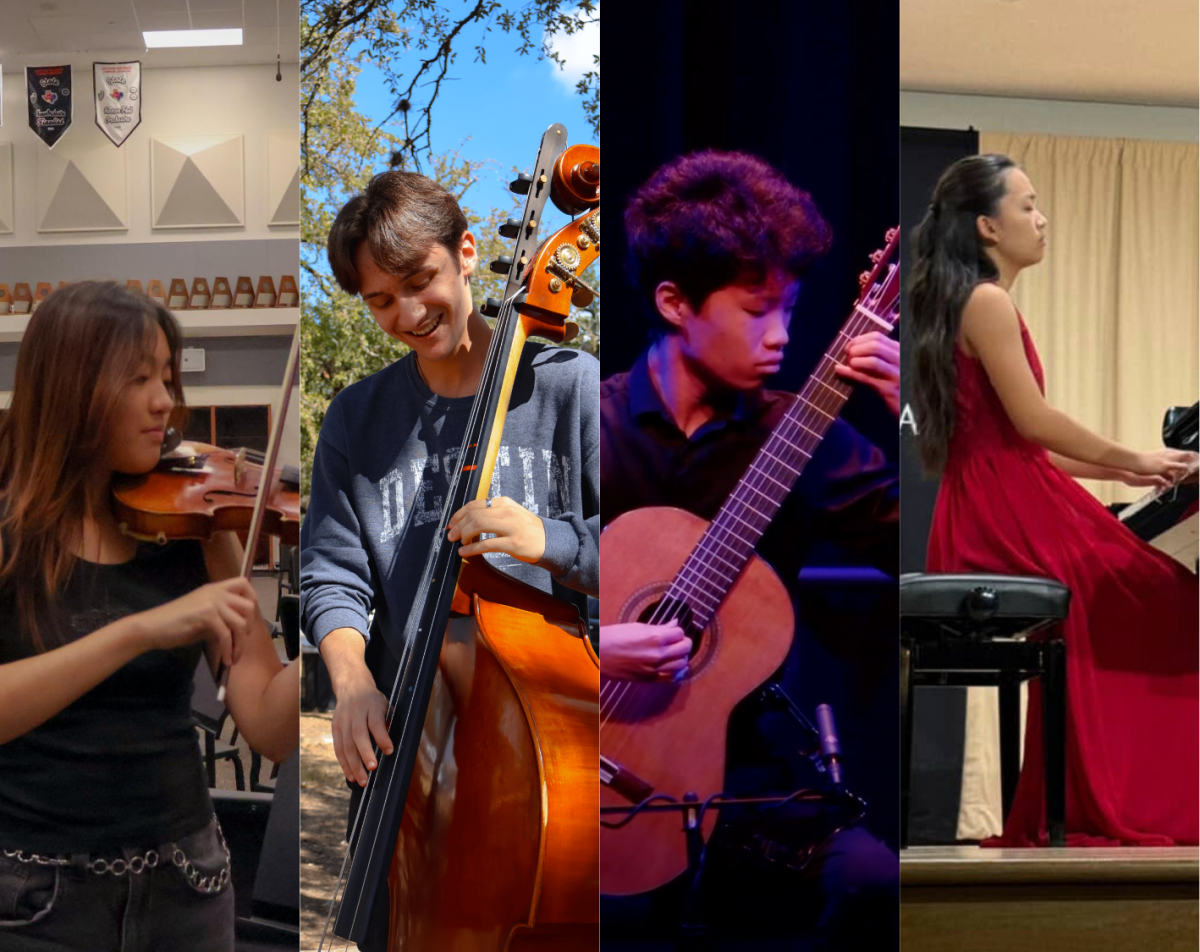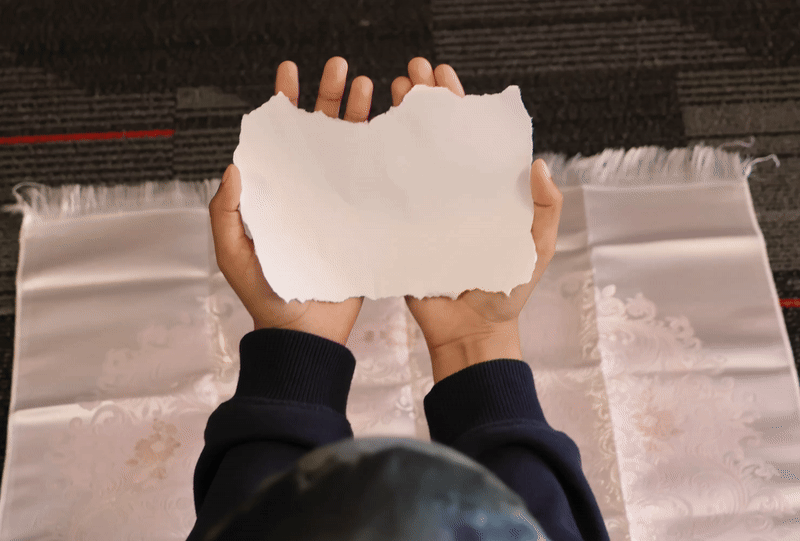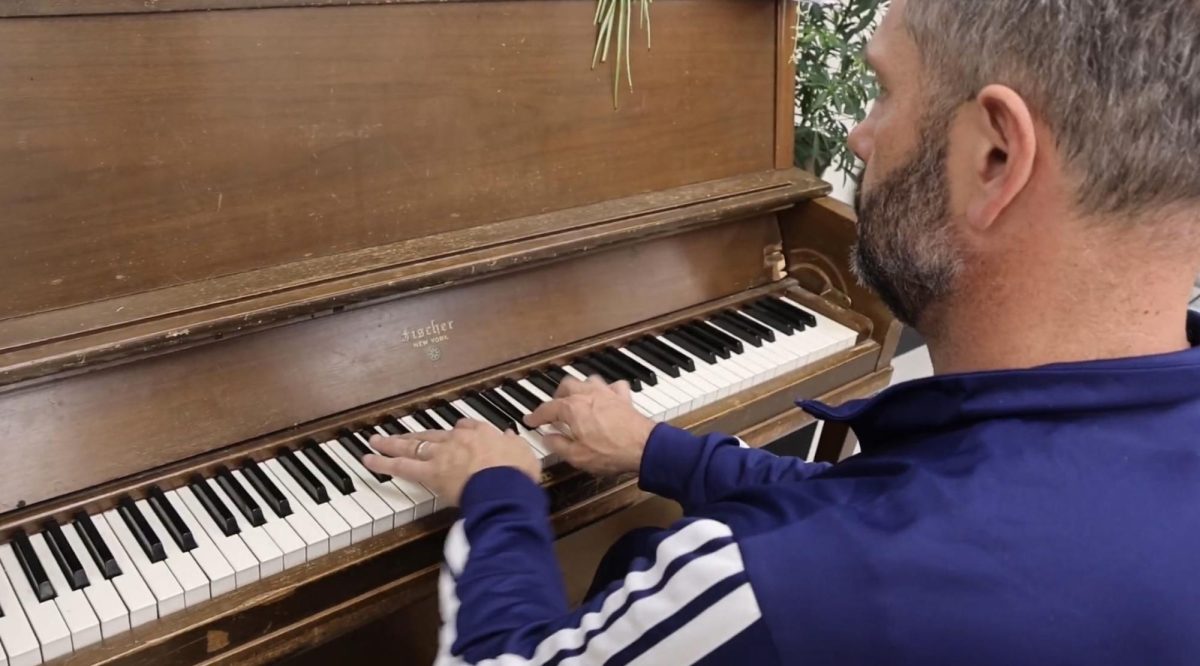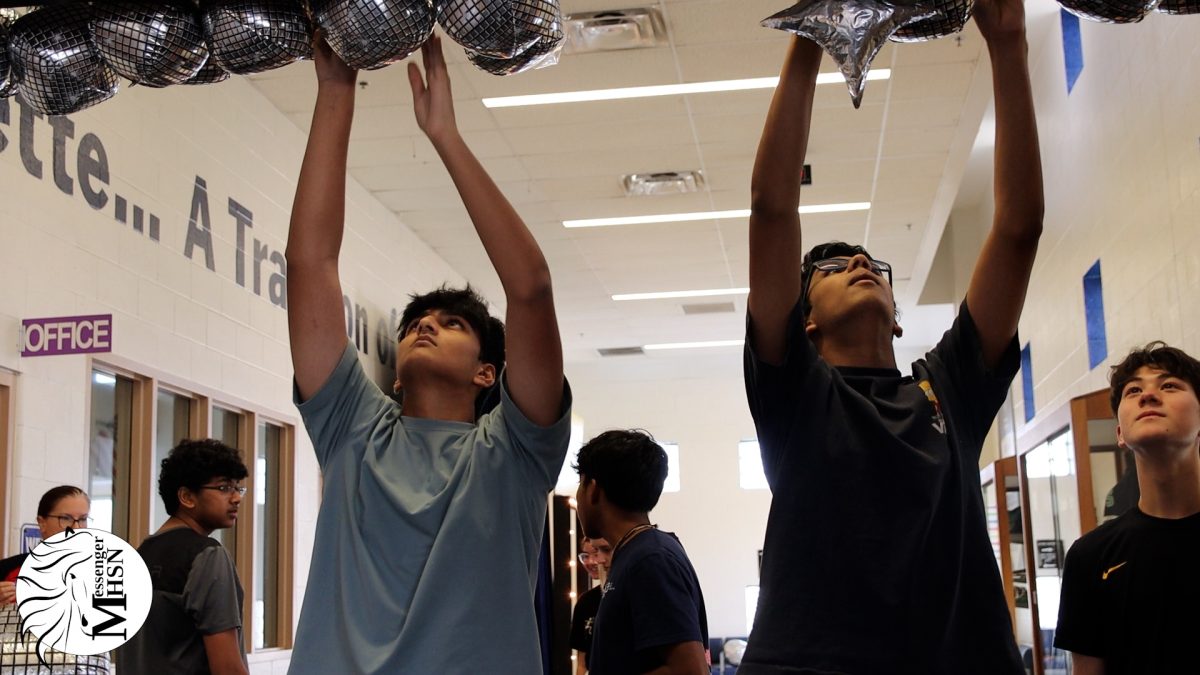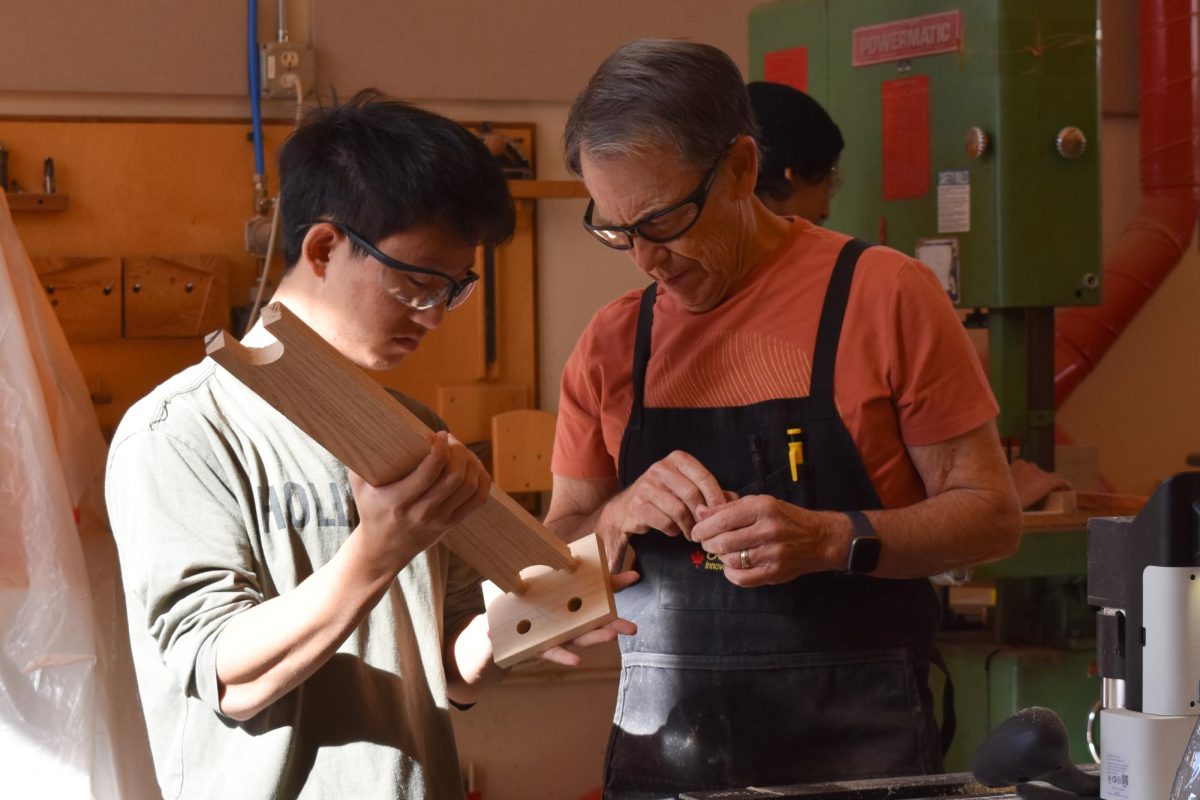Junior Claire Yuh still remembers how it felt to be a middle schooler taking her second woodworking class online during the pandemic, working with simple kits that resembled arts-and-crafts projects. Despite how underwhelming the class was, she decided to continue woodworking in high school, and the experience proved to be vastly different.
“From middle school [to high school], it’s a big jump [in terms of] the tools you use,” Yuh said. “Because obviously in middle school, they’re really scared about you getting hurt.”
Though even Advanced Woodworking students are supervised with larger tools such as saws, Yuh says being able to make commercial-level work with commercial-level tools gives her a sense of accomplishment. Junior Aaron Hung agrees, saying that he was especially proud of the folding chair he made in his freshman year.
“My favorite memory is probably when I got that chair done,” Hung said. “I finished it just in time, right before summer vacation, so I was able to carry it back [home].”
Hung also took his first woodworking class in middle school, and he signed up for the high school class to see what he missed. In the past three years, Hung has not only made small projects like pens but also furniture such as a rocking chair.

According to engineering and woodworking teacher Ted Shinta, the woodworking pathway used to be a full four-year program that prepared students for related college degrees or carpentry apprenticeships. Although the class has evolved over time to focus more on decorative work, Shinta maintains that the fundamental skills it teaches remain useful to students.
“The kind of thinking and skills you learn [are] not just for woodworking,” Shinta said. “I’m hoping it teaches persistence, resilience, patience, craftsmanship [and] attention to detail. I don’t know if you really get [those skills] in other courses at school, but I do think they’re important once you go to the job.”
In addition to these skills, Advanced Woodworking also gives students the opportunity to mentor students from the Intro Woodshop class, something sophomore Alexander Chu says has been a highlight for him.
“My favorite part of the class is probably working with some of the newer students to help them improve their woodworking skills,” Chu said. “When students get the ‘aha’ moment on how to do it, I find that quite enjoyable.”
Hung and Yuh also agree that woodworking has been both pleasant and valuable to them. For Hung, it provides a welcome respite from the busyness of junior year and has helped him build patience as he reworks different parts of his projects. For Yuh, the tangible results already have her convinced that she’ll take it again next year.
“I just took it because it’s fun,” Yuh said. “It’s fun to have something where you can work on it and you can see the result in a physical form.”
Yet Shinta noted that the joys and benefits of woodworking and other trades are often overlooked in MVHS’ STEM-focused culture, causing prospective students to choose other electives instead.
“I was brought up to think that it was beneath you to work with your hands, even though my father was a farmer,” Shinta said. “But I wish I had done woodworking in high school because then I would’ve known that I actually do like it and have an aptitude for it.”
Yuh agrees that among students, woodworking isn’t always seen as a priority, as “a lot of the people in the class don’t really take it seriously.” For those who do take it seriously, though, even for just a few years, it pays off. Chu says that while he didn’t know initially if he would enjoy the class or not, he ended up learning useful skills and making memories along the way.
“During freshman year, I was working with two students on getting our cutting boards done and that was quite enjoyable,” Chu said. “Also bowls – in that two month process, we got a lot done together, and it was quite fun to work with those students.”

Especially considering the support offered to new students by returning students, Shinta and his two friends who sometimes come by to help, Hung and Yuh both encourage anyone interested in woodworking to join, even just for the fun of it.
“Since it isn’t a hard class or a very academic one, I use it to take my mind off of things,” Hung said. “[It’s] pretty fun. So I say if anyone has any interest, they should just give it a try.”
As a woodworking teacher, Shinta agrees, but he also emphasizes the benefits of getting exposure to a wide range of practical classes.
“I do think classes like business, journalism and woodshop — things that are related to career fields — add a lot to a student’s education,” Shinta said. “You just don’t know what you’re going to need to know, so the more you know and the more diverse your knowledge is, the more chance that in the future, you’ll be prepared for whatever comes.”
This story was originally published on El Estoque on November 3, 2023.

















